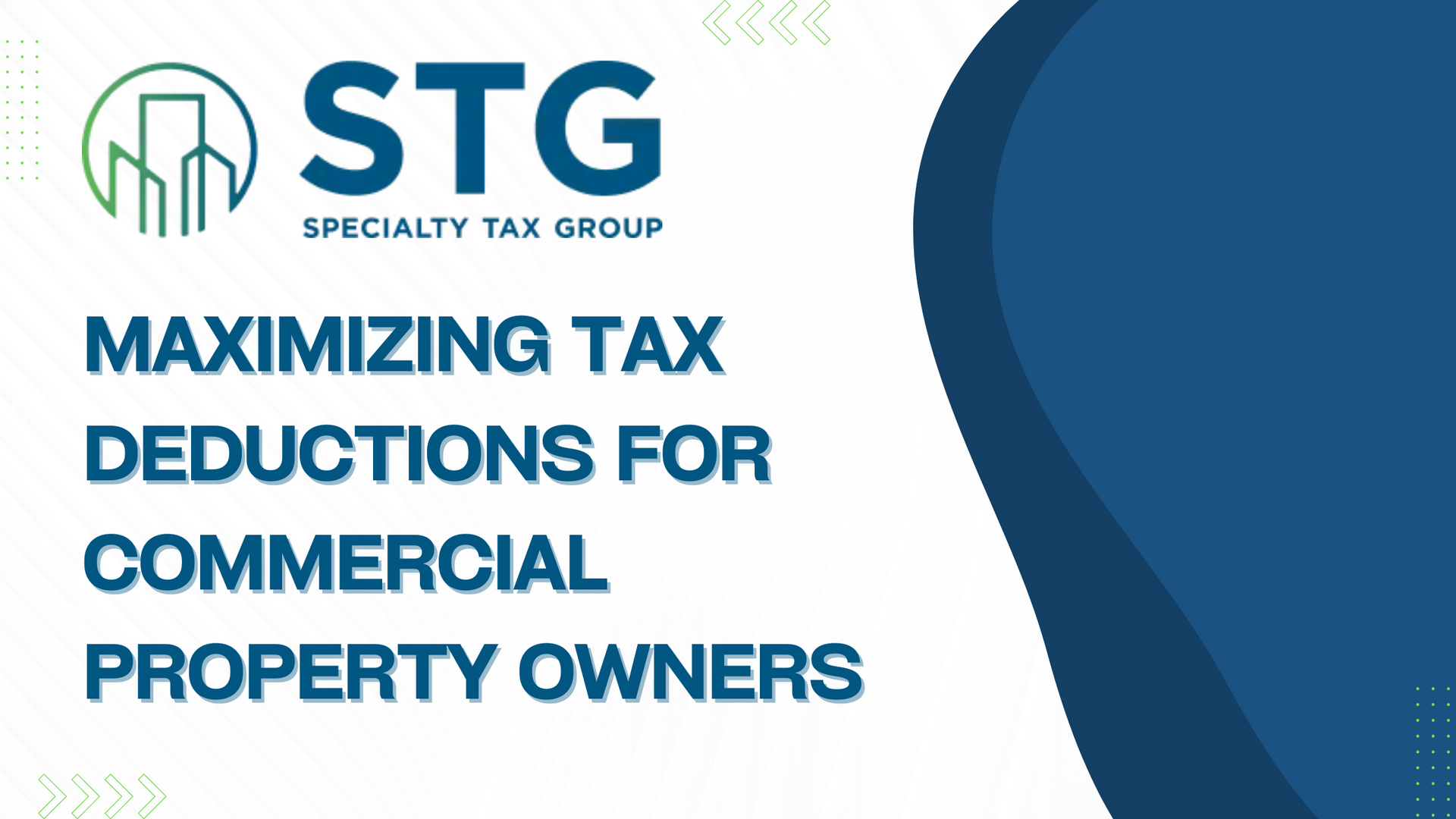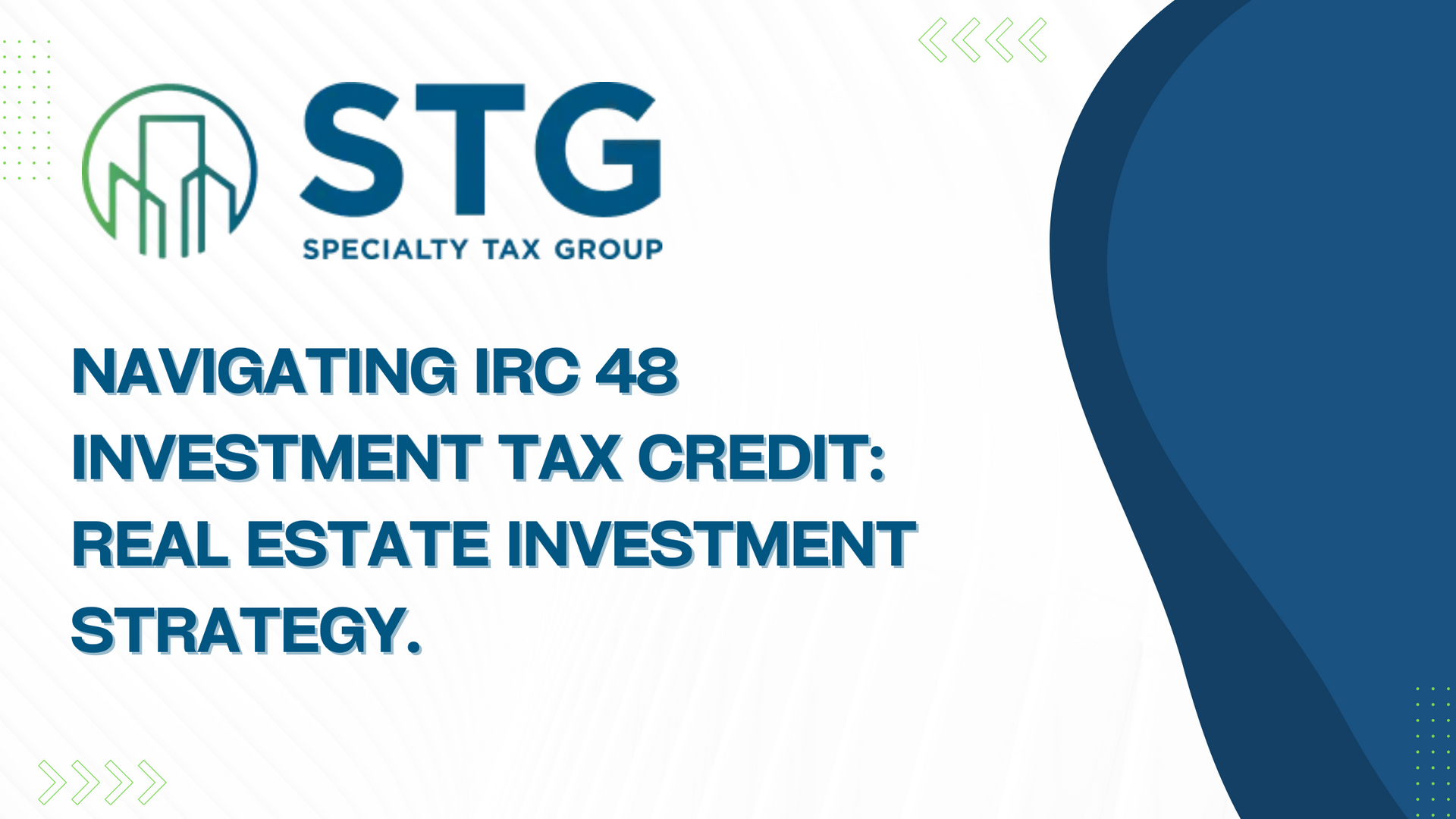This blog post has been researched, edited, and approved by John Hanning and Brian Wages. Join our newsletter below.
Newsletter Form
Cost Segregation Education for
CPAs and Taxpayers: Maximizing
Tax Deductions for Commercial
Property Owners
Commercial property owners often turn to tax preparation specialists, such as tax lawyers, CPAs, and accountants, to minimize their federal income taxes. These professionals are expected to leverage their expertise to maximize tax deductions. However, given the complexity of the IRS tax code, it is virtually impossible for a single individual to possess in-depth knowledge of all industries.
This is where a specialized approach to tax reduction, such as cost segregation, becomes essential. By incorporating a cost segregation specialist into the tax preparation team, commercial real estate owners can significantly reduce their federal income tax liability. This blog post aims to educate CPAs on the importance of cost segregation and how it can be effectively implemented to benefit their clients.
Understanding Cost Segregation
What is Cost Segregation?
Cost segregation is a strategic tax planning tool that accelerates the depreciation of certain components of a commercial property. Under standard depreciation methods, commercial properties are typically depreciated over 39 years. However, cost segregation allows for the reclassification of specific components of a property into shorter depreciation periods of 5, 7, and 15 years. This acceleration in depreciation reduces the taxable income, thereby decreasing the federal income taxes owed by the property owner.
The Importance of Cost Segregation
Despite its significant benefits, cost segregation is underutilized. It is neither a tax shelter nor a form of tax evasion; instead, it is a legitimate and conservative method endorsed by the American Institute of Certified Public Accountants (AICPA). The National Journal of Accountancy has published numerous articles supporting this technique, highlighting its effectiveness in generating substantial tax deductions.
The Role of CPAs in Cost Segregation
Why CPAs Should Recommend Cost Segregation
Many CPAs are familiar with cost segregation but may hesitate to recommend it without documented analysis. The IRS regulations surrounding building components are intricate, making it challenging for accounting professionals to be fully aware of all applicable items for a specific property. However, a well-conducted cost segregation study provides a detailed and reliable report, helping CPAs accurately prepare depreciation schedules and significantly reduce their clients' taxes.
Overcoming Hesitation
CPAs might be reluctant to perform cost segregation studies due to the specialized knowledge required, which often falls outside the scope of traditional tax practices. However, collaborating with tax credit and incentives specialists who focus on Cost Segregation can provide independent reports on the owner's depreciation schedule ensures accuracy and compliance with IRS regulations. By seeking the expertise of ASCSP Certified Cost Seg professionals with a background in real estate cost estimation and engineering, CPAs can confidently recommend cost segregation to their clients.
How Cost Segregation Works
Detailed Analysis and Reporting
A cost segregation study involves a thorough review of the building's cost basis, including construction, renovation, and repairs. A technician conducts a site visit to take detailed measurements and assess the quality and condition of the property. Following the site visit, the technician calculates the value of various components using widely accepted pricing resources and local economic conditions. The study results in a comprehensive report that documents the amount of 5-, 7-, and 15-year property qualifying for short-life depreciation.
Components Eligible for Accelerated Depreciation
Cost segregation regulations outline approximately 130 categories of property that qualify for shorter depreciation lives. For example:
- 5-Year Property: Includes items such as carpet, vinyl flooring, decorative lighting.
- 7-Year Property: May include unexpensed office furnishings, fixtures & equipment.
- 15-Year Property: Encompasses all assets on the exterior footprint of the building which may include paving and landscaping.
By reallocating these components to shorter depreciation periods, property owners can significantly reduce their taxable income.
Benefits of Cost Segregation
Substantial Tax Savings
The annual tax savings from cost segregation can be significant. For instance, studies conducted by national real estate consulting firms have shown first-year tax savings ranging from $10,800 to $182,600, depending on the property type and size. The table below summarizes the potential savings for different property types:
Property Type
Range on Year 1 Tax Savings (100,000-500,000 sq. ft. property size)
- Office: $35,500 – $160,000
- Apartment: $19,240 – $96,200
- Retail: $36,500 – $182,600
- Industrial: $10,800 – $54,000
Enhanced Cash Flow
By accelerating depreciation, cost segregation enhances cash flow for property owners. This increased cash flow can be reinvested into the property, used for new investments, or applied to other business needs. The overall financial health of the property owner improves as they retain more capital.
Compliance and Documentation
A professionally prepared cost segregation report provides the necessary documentation to support the accelerated depreciation claims. This detailed documentation ensures compliance with IRS regulations and minimizes the risk of audits. In case of an audit, the report serves as solid evidence of the property's depreciation schedule.
Implementing Cost Segregation
When to Obtain a Cost Segregation Study
It is generally advisable to obtain a cost segregation study in the year a property is purchased or built. However, property owners who acquired or constructed property after 1986 can still benefit from cost segregation by recouping previously under-reported depreciation without filing amended tax returns. This retroactive application amplifies tax deductions, resulting in substantial tax savings.
Selecting a Cost Segregation Provider
Specialty tax firms, Big Four, and their spin-offs are the primary providers of cost segregation studies. Some small to mid-size accounting firms offer the service but often outsource the report preparation to specialized firms. When selecting a cost segregation provider, it is essential to choose one with a proven track record and expertise.
Properties That Benefit Most from Cost Segregation
Cost segregation is typically effective for properties with an improvement basis of $500,000 or higher. Properties with extensive site improvements and customized fit & finishes generate significant results. Cost segregation can be performed for various property types, including apartments, medical office buildings, retail spaces, self storage, industrial facilities, and special-use properties.
Case Studies and Testimonials
Real-World Examples
Many CPAs who have implemented cost segregation for their clients report substantial tax savings. For example, Georgia CPA, stated, "As a CPA in public accounting, I have to be very careful when making referrals to my clients. STG has quickly proven themselves with the high-quality work they have completed for my clients. They have turned around state tax credits and cost segregations very quickly.”
Client Satisfaction
Clients who have utilized cost segregation studies are often extremely pleased with the results. Ohio CPA, "John, Brian and the STG Team did an excellent job for a very client of mine. We had a very unique situation where STG had to act quickly in a very short period of time. Their quality was excellent and their client service exceeded expectations. Well done STG!!”
Conclusion
Cost segregation is a powerful yet underutilized tool that can significantly reduce federal income taxes for commercial property owners. By accelerating depreciation for specific components of a property, cost segregation provides substantial tax savings and enhances cash flow. CPAs play a crucial role in recommending and implementing cost segregation for their clients. By collaborating with certified Cost Seg specialists and obtaining detailed cost segregation reports, CPAs can ensure compliance with IRS regulations and maximize tax deductions for their clients.
Final Thoughts
As tax regulations continue to evolve, it is essential for CPAs to stay informed about tools like cost segregation that can provide significant benefits to their clients. By embracing cost segregation, CPAs can enhance their value to commercial property owners and help them achieve substantial tax savings.
For more information on cost segregation and how it can benefit your clients, contact
Specialty Tax Group today. Our team of experts is ready to assist you in maximizing tax deductions and improving the financial health of your clients' commercial properties.






